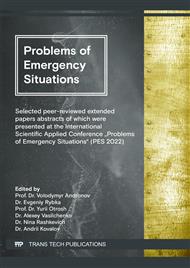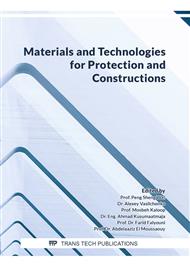p.159
p.169
p.175
p.183
p.191
p.199
p.206
p.216
p.224
The Improvement of the Method to Determine the Temperature in Steel Reinforced Concrete Slabs in Assessment of their Fire Resistance
Abstract:
The existing means for calculating the fire resistance of steel reinforced concrete horizontal structures beyond the fire resistance limit for more than two hours have been studied. There were conducted the computational experiments on the analysis of thermal load in case of fire for up to 3 hours, without taking into account the mechanical load on steel reinforced concrete slabs, modeled using steel sheets. The indicators obtained as a result of thermal computational experiments provide an opportunity to analyze the temperature distribution in the thickness of steel reinforced concrete horizontal structures made with a steel sheet. The relevant results can be used to determine the indicators of fire resistance of these structures for at least 3 hours. Thus, the thermal dependences, studied in this work, are a scientific basis for improving the capabilities of existing methods for determining the fire resistance of steel reinforced concrete horizontal structures with a steel sheet. The process of determining the temperature distribution indicators in these structures was performed using the standard method for solving the equations of thermal conductivity using the finite element method. Based on the results of solving the thermal problem, the graphs of thermal dependences were constructed, providing an opportunity to further analyze the indicators of fire resistance on the basis of the onset of signs of loss of load-bearing and insulating capacity. In order to perform computational experiments, the necessary calculation models were built that take into account the thermal effect on the studied structures under the standard temperature mode of fire.
Info:
Periodical:
Pages:
216-223
Citation:
Online since:
July 2022
Authors:
Price:
Сopyright:
© 2022 Trans Tech Publications Ltd. All Rights Reserved
Share:
Citation:



